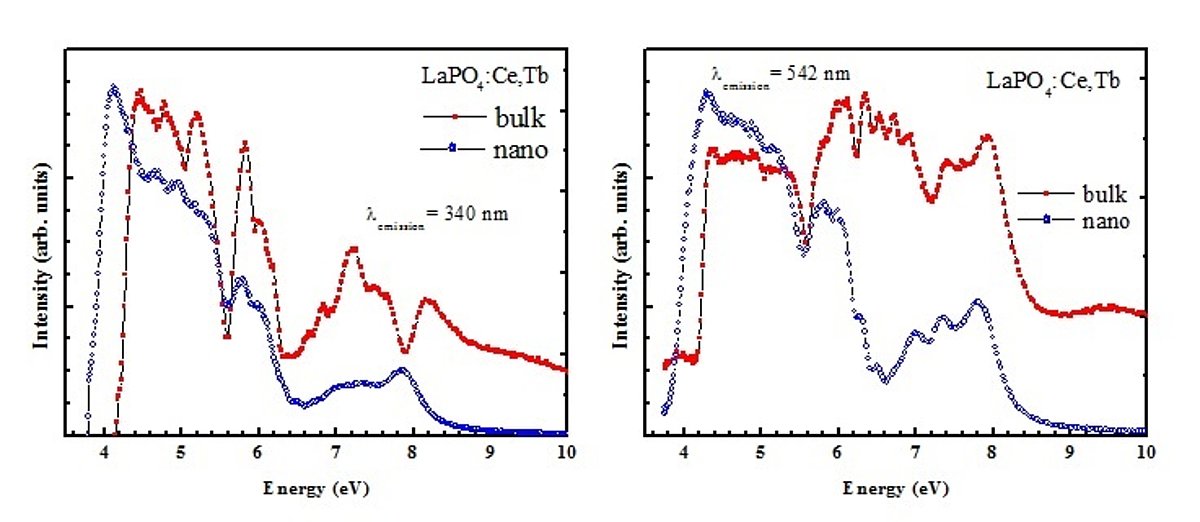
The most ambitious and fascinating application of luminescent nanomaterials is probably related to medicine and molecular biology. Here, luminescent nanomaterials are promising tags for optical imaging and fluorescent labeling to allow for novel techniques of non-invasive diagnosis and in vivo observation of complex vital functions. The current work is a summary of a systematic spectroscopic characterization of actual nanosized luminescent oxides (LaPO4:Ce,Tb; YVO4:Eu; Y3Al5O12:Ce (YAG:Ce); ZnWO4; NiWO4) with an attempt to analyze the electronic relaxation performed using energy- and time-resolved luminescence spectroscopy. The experiments have been carried out utilizing European synchrotron centers: i) The Superlumi line of DORIS III storage ring of DESY (Hamburg, Germany); ii) The luminescence endstation of FinEst undulator beamline of MAX III storage ring of MAX IV (Lund, Sweden). The examinations focused on the energy transfer processes within the rare-earth ions leading to the optical transitions. The influence of the different parameters such as temperature, doping concentration and initial excited state was treated to provide complementary information concerning the electronic structure as well as electronic excitations in nanophosphors. Achieved results shows that small nanoparticle size and quencher centers are related to nanoparticle’s surface are responsible for changes in luminiscence properties of nanosized oxides.
The following theses are discussed:
- Tb3+ luminescence practically cannot be directly excited in nanosized LaPO4:Ce,Tb but could be excited after energy transfer from Ce3+ only.
- Degradation of the emission as well as excitation spectra in VUV range in nanosized LaPO4:Ce,Tb and YVO4:Eu phosphors could be explained by charge carriers trapping during their thermalisation by surface defects with subsequent non-radiative relaxation.
- New blue-UV emission band has been discovered in YAG:Ce nanocrystals. It is suggested that Ce3+ ion substituting Al3+ is emission center of this blue-UV luminescence.
- The excitation spectra of ZnWO4 and NiWO4 in VUV spectral range have been obtained. The correlation between excitation spectra and electronic structure of ZnWO4 and NiWO4 nanocrystals is demonstrated.